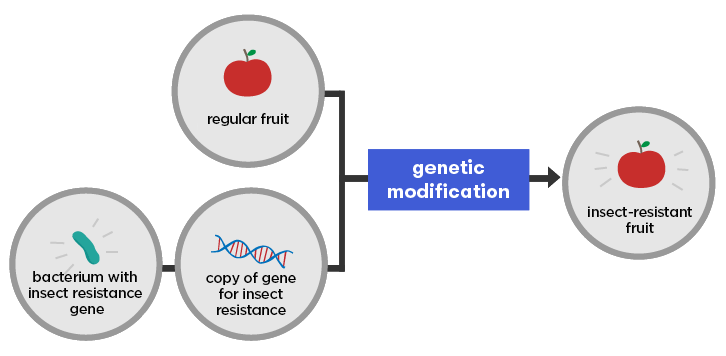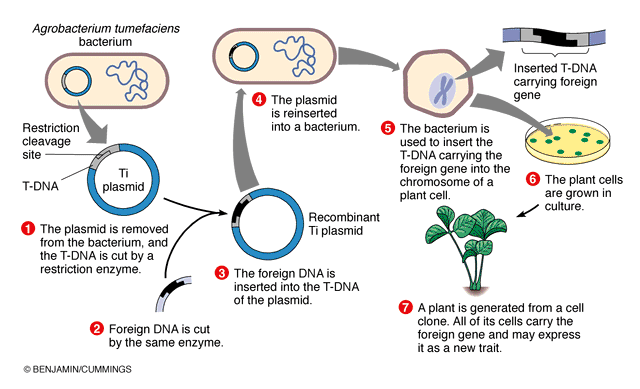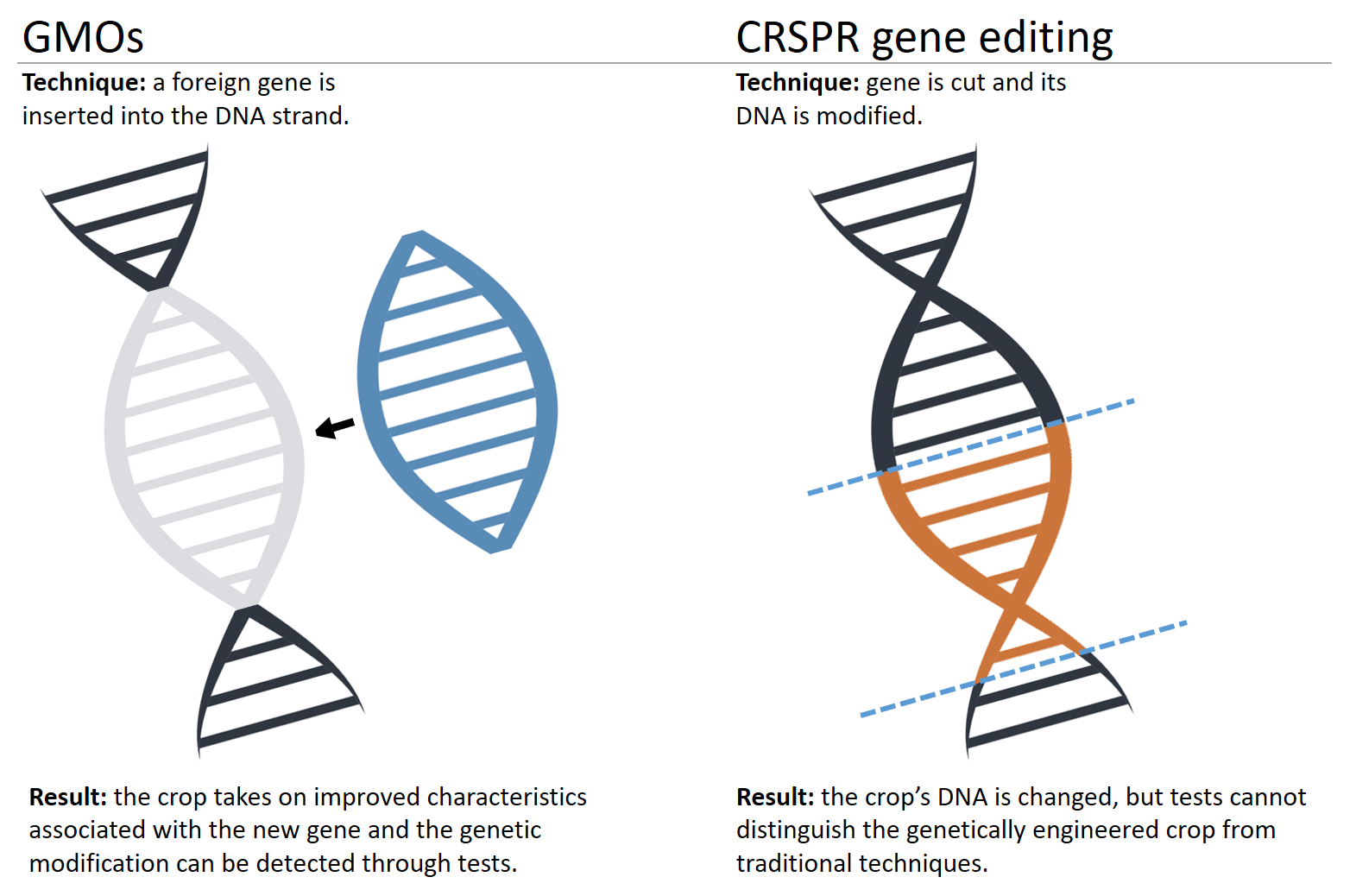Genetic engineering has been used since the 1970s and builds on the scientific advances we have made in the study of DNA. 3 Genes are small sections of the long DNA sequence that is ordered into chromosomes in animal and plant cells.

Genetic Engineering An Overview Sciencedirect Topics
This may mean changing one base pair A-T or C-G deleting a whole region of DNA or introducing an additional copy of a gene.

. For example homologous recombination can be used to target specific sequences in mouse embryonic stem ES cell genomes or other cultured cells but it is cumbersome poorly efficient and relies on drug positivenegative. Genetic engineering is the transfer of DNA from one organism to another using biotechnology. Human genetic modification or gene editing can be used in two very different ways.
Corn cattle and even dogs have been selectively bred over generations to have certain desired traits. DNA is made up of four chemicals. The are several steps in the process of genetic engineering.
Genetic engineering involves the direct manipulation of one or more genes. Genetic Engineering Technique. DNA Polymerase Genetically Modified Plants.
In order to understand genetic engineering basic knowledge of DNA is needed. The organism receiving the DNA is said to be genetically modified GM. Deoxyribonucleic Acid DNA is the blueprint of ones entire physical structure.
The stages of genetic engineering. Genetic engineering refers to the direct manipulation of DNA to alter an organisms characteristics phenotype in a particular way. Genetically Modified Organisms GMO- Definition Process and Examples.
The stages of this method of genetic engineering are. Addition of foreign DNA in the form of recombinant DNA vectors that are generated by molecular cloning is the most common method of genetic engineering. Extract the entire DNA from the organism.
The techniques employed in genetic engineering have led to the production of medically important products including human insulin human growth hormone and hepatitis B vaccine as well as to the development. The addition of foreign DNA in the form of recombinant DNA vectors generated by molecular cloning is the most common method of genetic engineering. The term genetic engineering is used to describe the process by which the genetic makeup of an organism can be altered using recombinant DNA technology This involves the use of laboratory tools to insert alter or cut out pieces of DNA that contain one or more genes of interest.
GMOs- genetically modified organisms are any living entity constructed by altering their genetic composition without affecting their normal function. Somatic genome editing changes the genes in a patients cells to treat a medical condition. A few gene therapies are approaching clinical use but remain extraordinarily expensive.
The organism that receives the recombinant DNA is called a. A genetically modified organism GMO is an animal plant or microbe whose DNA has been altered using genetic engineering techniques. Virtually all plasmids that are used to deliver DNA contain genes for.
Adenine guanine cytosine and thymine surrounded by. Genetic engineering is the alteration of an organisms genotype using recombinant DNA technology to modify an organisms DNA to achieve desirable traits. One way to do this is by using a restriction enzyme.
Genetic engineering is the direct manipulation of DNA within a gene to modify an organisms characteristics phenotype in a certain way. Remove this gene from the rest of the DNA. The term genetically modified GM as it is commonly used refers to the transfer of genes between organisms using a series of laboratory techniques for cloning genes splicing DNA segments together and inserting genes into cells.
The location of the section of DNA containing the gene for. It differs in that after the novel DNA is delivered the viral replication process integrates it into the host cells genome. Genetic engineering is the use of molecular biology technology to modify DNA sequences in genomes using a variety of approaches.
Collectively these techniques are known as recombinant DNA technology. Using recombinant DNA technology to modify an organisms DNA to achieve desirable traits is called genetic engineering. 4 Adding characteristics to a living organism such as resistance to drought or disease can be achieved.
By contrast heritable genome editing would change genes in eggs sperm or early embryos to try. This method is similar to viral delivery methods used in plants in that virus strains are modified to carry genetic material into a cell. Scientist follow a step by step process in order to alter the DNA of an organism.
The process for genetic engineering begins the same for any organism being modified see Figure 3 for an example of this procedure. An organism that receives the recombinant DNA is called a genetically modified organism GMO. Identify an organism that contains a desirable gene.
Traditionally humans have manipulated genomes indirectly by controlling breeding and selecting offspring with desired traits. The term genetic engineering is generally used to refer to methods of recombinant DNA technology which emerged from basic research in microbial genetics. A gene in a soil bacterium Bt is inserted into the DNA of the corn to.
For thousands of years humans have used breeding methods to modify organisms. They learn what role enzymes DNA and genes play in the modification of organisms. Genetic engineering is the process of using recombinant DNA rDNA technology to alter the genetic makeup of an organism.
DNA polymerase is used by genetic engineers seal to the two gaps of the DNA to later create in into RNA or ribonucleic acid. In describing the process the example of a soybean will be used as a guide to each step. Describe how bacteria can be used in genetic engineering to produce human insulin Describe the arguments for and against the storage of DNA fingerprints.
Organisms whose genetic material is altered using the recombinant DNA technology or gene therapy is known as GMO.

What Is Genetic Modification Curious


0 Comments